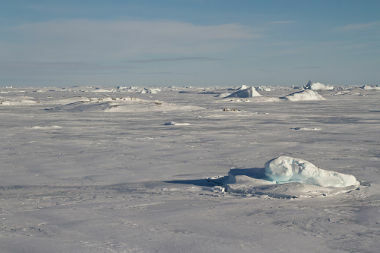it is understood by desertization the natural and gradual process of formation of the landscapes of the deserts. Generally, the combination of different climatic factors causes, over time, a green area or ecumene is transformed into a desert area, which presents inhospitable natural conditions (unfavorable to occupation human).
There is, therefore, a great difference between desertization and desertification. Desertization is a natural, slow process that results in the formation of deserts. THE desertification, although it can also occur naturally, it is considered an environmental impact, in which there is an expansion of sandy terrains in climates with low precipitation rates due to soil depletion and its dehydration.
How are deserts formed?
The desertization process happens in different ways, given that there are different types of deserts. Some of them are hot and sandy, like the Sahara; others are frozen, like Antarctica; while some even manifest periodic landscape transformations, such as the Kalahari desert. There are, in total, four different types of desertization:
a) Formation of high pressure cells
In tropical areas, greater solar incidence throughout the year causes high atmospheric pressure cells to form, which makes the environment drier. In some cases, counter-trade winds cause these characteristics to be announced in subtropical zones as well. The result is low average annual rainfall. Without rain, deserts gradually form over time. The Sahara Desert and some deserts in the Middle East emerged from this process.
b) Orographic barriers
In certain situations, the relief forms some large natural barriers that prevent the passage of moist air, the so-called orographic barriers. In the regions where they are found, torrential rains are formed, caused by the retraction of humidity, while the air masses become drier from that point onwards. With this, in places where this humid air should reach, large desert landscapes are formed, as is the case of Death Valley, in the USA, and the Judean desert, in Israel.
c) Coastal marine currents
In coastal areas, cold sea currents remove moisture from air masses moving towards the mainland, making them dry. In the same way as in the previous case, the affected areas start to have low air humidity and very rare rains, turning into large deserts. A classic example is the Atacama Desert in Chile, which arises from the presence of the Humboldt Current in the Pacific Ocean.
d) Polar regions
In the Earth's polar regions, all environments that present annual rainfall averages below 250 mm and temperatures that never exceed 10ºC form the so-called "polar deserts", such as in Antarctica and Greenland.

Polar desert in Antarctica, completely inhospitable
By Me. Rodolfo Alves Pena
Source: Brazil School - https://brasilescola.uol.com.br/geografia/desertizacao.htm
